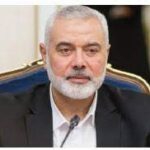Check out the website: https://lenspoliticalnotes.com Look at the recent Political Notes and Len’s Letters on the website:
November 10th , 2023 Len’s Letter #69 Transforming Regimes



Netanyahu of Israel Abbas of the Palestinian Authority, Haniyeh of Hamas
Analysts tell us that Israel’s plan to destroy and replace Hamas is impossible. Hamas is a movement. Hamas has a grip on Gaza. Replace one leader and you will get another. Hamas has succeeded in making civilians their shield. Israel kills too many civilians trying to get at Hamas. A building by building aggressive war would be impossible for Israel. That kind of war is what Hamas wants. Hezbollah would create a northern front. Palestinians on the West Bank would create a new intifada. These comments merge into efforts to find an accommodation with Hamas.
Could Israel make an accommodation? Hamas has demonstrated what it would do if it achieved a victory. If they could, Hamas would eradicate not just the Israeli state, but the people who live in it. We saw them begin the task on October 7.
We desperately need a Palestinian state. Palestinians need such a state. Israel needs a Palestinian state. The western world needs such a state. But what kind of state do we need? The history of the recreation of the post-World War II states of Japan and West Germany (eventually, simply, Germany) may be examples of what is needed to create the kind of Palestinian state we need, the Palestinians need, and Israel needs.
Consider Germany and Japan and the Palestinians. The Nazis were a movement. So was Emperor worship in Japan. The German and Japanese regimes had a grip on their nations and beyond. Each nation was defeated. Each nation was more than defeated. Each nation was transformed. Could those transformations be models for Israel and the Palestinians?
Both Germany and Japan were defeated thoroughly, so thoroughly their governments were not operating. Their economies had ground to a stop. Their people were destitute.
Defeat alone did not mean people let go of the defeated regime. Some historians say that most Germans after the war still believed that Naziism was a good idea, but an idea badly or even wrongly implemented. Destroying that faith in the Nazis was essential to transforming Germany. In Japan the emperor was still revered. The Supreme Commander for the Allied Powers (Douglas MacArthur) took control of Japan, but not quite as formally as did the allies take control of Germany. The new national charter for Japan, initially drafted by the occupiers for Japan, retained the emperor as head of state. The emperor participated in the transformation. He renounced claims to divinity.
War trials were part of the transformation. In Nuremberg, courts created and implemented by the Allies tried the most important available Nazis for genocide and crimes against humanity. Nearly two decades later, twenty-two SS officials were tried by the German state for their crimes at the Auschwitz-Birkenau death camp. Germany had adopted the Allied vision of Nazi crimes. War trials in Japan led to the execution of seven members of the leadership and lesser sentences for others. Trials were held in Tokyo and in locations around the country.
In both countries, the context for these trials was a thoroughly defeated people. Americans who advocated more than an absolute minimum level of food for Germany underestimated the actual need. Americans who advocated the absolute minimum sought near-starvation as punishment for a people that had followed the Nazis. If anything, the Japanese food shortages were remedied more quickly than the German shortages – but that was not saying much for a country already punished by nuclear weapons. In both Germany and Japan soldiers and others returned to their native country complicated the problem of feeding the population. Neither country was able to farm for a year or two at least. These were devastated countries.
Japanese soldiers were disarmed and demobilized, military headquarters dissolved, and war materiel destroyed. War prisoners were released, including Communists whose party was given legal status. With a goal toward partial dis-industrialization, the Zaibatsu were dissolved into smaller companies and labor unions were authorized. Shinto was abolished as the state religion and women were enfranchised. The Allied Command considered purging some 700,000 public officials, but purged “only” 200,000 from their jobs. Education was reformed. It was made to look slightly American with junior high schools and language teaching that included a new and easier script.
In Germany, unlike Japan, the Allies took over administration of the country and then gradually restored authority to the Germans, moving from an allied military government to an allied civilian government to German governments. About 8.5 million Germans were members of the Nazi. Party, more than 10% of the country’s population. The allies attempt to purge lower-level Nazis failed in the face of so many claiming they had merely been “nominal” Nazis. An effort to purge leaders of society, culture, and politics was abandoned in 1951. In a way, it was not necessary. The people of Germany weaned themselves away from the culture and way of life that led to a disastrous war-time loss. Younger Germans eventually confronted their elders about their behavior. The experience in East Germany, under Soviet control, was different from the rest of the country. East Germany became part of the Russian bloc of nations; West Germany became part of Western Europe.
The effort to de-industrialize Germany made the poverty worse and the burden on the Allies greater. Industrial restrictions gradually ended and failures in the transition were masked as West Germany began to prosper. A reasonably generous social welfare system was developed, making Germans more willing to take risks. And the failing of Denazification left leaders of major industries able to return as accepted figures.
In Japan, some argue the Korean War saved the Japanese economy. Japan became a principal supply depot for UN forces. By 1950, the economy seemed to be recovering from the war. A formal peace treaty with Japan complemented the constitution that had been drafted by Americans and adopted by Japan. The United States was no longer worried about Japan’s military adventurism. Instead, the focus was on the Soviet Union and on China.
In both West Germany and Japan, the Allies assisted their former enemies. In both countries, parliamentary democracy was the expectation. The West Germans and the Japanese had taken over the responsibility for rejecting, punishing, and delegitimizing the enemies of democracy. They reckoned with the racism and/or extreme nationalism of their past, and enacted political and socioeconomic policies that returned them to what the west understood as civilization. All of that took money and resources from the United States. Whether it was through the Marshall Plan or support for the US occupation of Japan, American resources were effective, crucial.
Reintegrating lower-level leaders into the politics and economics of West Germany and Japan allowed the countries to operate. Victories that oust all of the leaders create a different kind of chaos. Post-World War I vengeance against Germany led, not necessarily inevitably, to Nazi dominance of Germany and World War II. A more recent example of that is the DeBa’athification of Iraq. Removal of all Ba’athists from the Iraqi army left an unaffiliated army of men with guns, but without purpose. They found a purpose in ISIS.
Does the post-World War II history of Japan and Germany have any relevance for Israel and Gaza and the rest of Palestine? Could Israel achieve so thorough a victory? Would the world allow it? If they approach such a victory, will they have to face the Hezbollah army in Lebanon? Could Israel capture enough leaders of Hamas to try them for war crimes? Try them for the horrors of October 7? What else could they do to obliterate the Hamas ideology? Could Israel forego vengeance and incorporate lower-level followers of Hamas into the political and economic leadership?
Could the United States help Israel transform Gaza and the West Bank? Would the United States put the necessary resources into the economic and political recovery of Gaza and the West Bank? Would Israel and the United States take the risk to create a genuine port for a recovering and transforming Gaza? Would they create an effective and protected connector between Gaza and the West Bank? Would the United States and Israel and the Palestinians take seriously the matter of creating a Palestinian state?
Is there a light at the end of the tunnel?